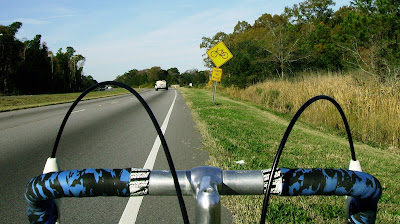The chances of being killed on a bicycle are less than the odds of dying in an automobile.
Statistics actually confirm the statement is true; that is, with the exception of one. When comparing the fatality risk by miles traveled, every one million miles cycled, (1.6 Million Kilometers.) produces 0.039 cyclist fatalities, compared to 0.016 fatalities for motorists.
Both figures are very low but it would seem in this straight up, mile for mile comparison, that cyclists are more than twice as likely to die on a bicycle than in an automobile.
However, this statistic is flawed to the point that it can be ignored, for the simple reason it would take a cyclist riding slightly under 385 miles per week, 50 years to ride one million miles.
Most of us will never come close to that kind of cycling mileage; 500,000 miles in a lifetime would be very good. Compare this to driving, and we all know how relatively easy it is to put 100,000 miles on our car speedometer, two million miles in an automobile in a lifetime is not unreasonable.
When you consider the lower mileage covered in any given year, the chances of a bicycle fatality are greatly reduced. This is confirmed in another statistic that compares hours cycling with hours driving.
For every million hours spent cycling the fatality rate is 0.26, compared to 0.47 deaths per million driving hours. Therefore, driving a motor vehicle has nearly twice the risk of fatality as riding a bike for a given duration.
If you rode your bike non-stop for 114 years, which is one million hours, your chances of being killed on the road would be roughly 1 in 4. In that same period, your chances of dying of natural causes would be at least 99.999%.
Another statistic compares fatalities per million people. According to the US National Safety Council, for every million cyclists in the US, 16.5 die each year, whereas for every million motorists, 19.9 die each year.
How about the chances of dying as a result of injuries from a bicycle accident? One would suppose that crashing on a bicycle has a higher risk of death than crashing in a motor vehicle, but according to the NHTSA, bicycles compare rather well.
The odds of dying from a bicycle crash are 1 in 71. This compares to 1 in 75 for an SUV, truck or van, 1 in 108 for a car, 1 in 26 for a motorcycle, and 1 in 15 for a pedestrian.
In other words, the odds of dying in a bike crash are about the same as the odds of dying in an SUV crash. The false sense of security that comes from driving an SUV tends to produce far more dangerous driving behavior.
Many cyclists fear being hit from behind. This type of accident only accounts for slightly over 10% of all bicycle accidents, and half of these occur at night when the cyclist does not have lights.
In 90% of cases where a cyclist is hit from behind, injuries were minimal. In explaining the high death rate when pedestrians are hit. A pedestrian hit by a car doing 40 mph, the pedestrian is practically stationary, and the 40 mph impact is directly on the body.
Whereas, a cyclist traveling at 15 mph, hit by a car doing 40, the impact is 25 mph if hit from behind, and it is often not a direct hit on the body.
The most common accidents occur in front of you, and by defensive riding, many can be avoided. These are, vehicles coming towards you and turning in front of you. Vehicles pulling out from side roads and driveways in front of you. Drivers passing you then turning right in front of you (The right hook, or left hook in the UK.)
Statistics confirm that you can also reduce your risk of an accident if you don’t do the following: Don’t ride on the sidewalk and suddenly appear in front of motorists at intersections, especially if you are going the wrong way.
The same goes for riding the wrong way on a one-way street. Motorists are looking one way and not expecting traffic from the other direction. Don’t ride at night without lights or reflectors is another obvious one that will greatly reduce your risk of an accident.
I can’t vouch for the accuracy of some of these statistics, and individuals must draw their own conclusions. For example, in a risks per million hours of an activity comparison, scuba diving is 7 times more dangerous than cycling; however, a person is likely to spend far more hours cycling per year than scuba diving. How do you compare the two?
However, I think the figures are generally positive for cyclists. You can get out and ride your bike knowing the odds of survival are in your favor, and if you ride smart, your odds are even greater. Here is another one.
According to a study by the British Medical Association, the average gain in "life years" through improved fitness from cycling exceeds the average loss in “life years” through cycling fatalities by a factor of 20 to 1.
So you see, cyclists really do live longer.
Further Reading
Adult Bicyclists in the United States
Bicycle Almanac
Comparative Risk of Different Activities
Cycle Safely (RTH)
General Background on Bicycle Risks
Ken Kifer's Bike Pages: The Risk of Bicycle Use
Toronto Bicycle/Motor-Vehicle Collision Study (2003)
 Wed, June 4, 2008
Wed, June 4, 2008 
 Dave Moulton | Comments Off |
Dave Moulton | Comments Off |  Bike Riding
Bike Riding 



















